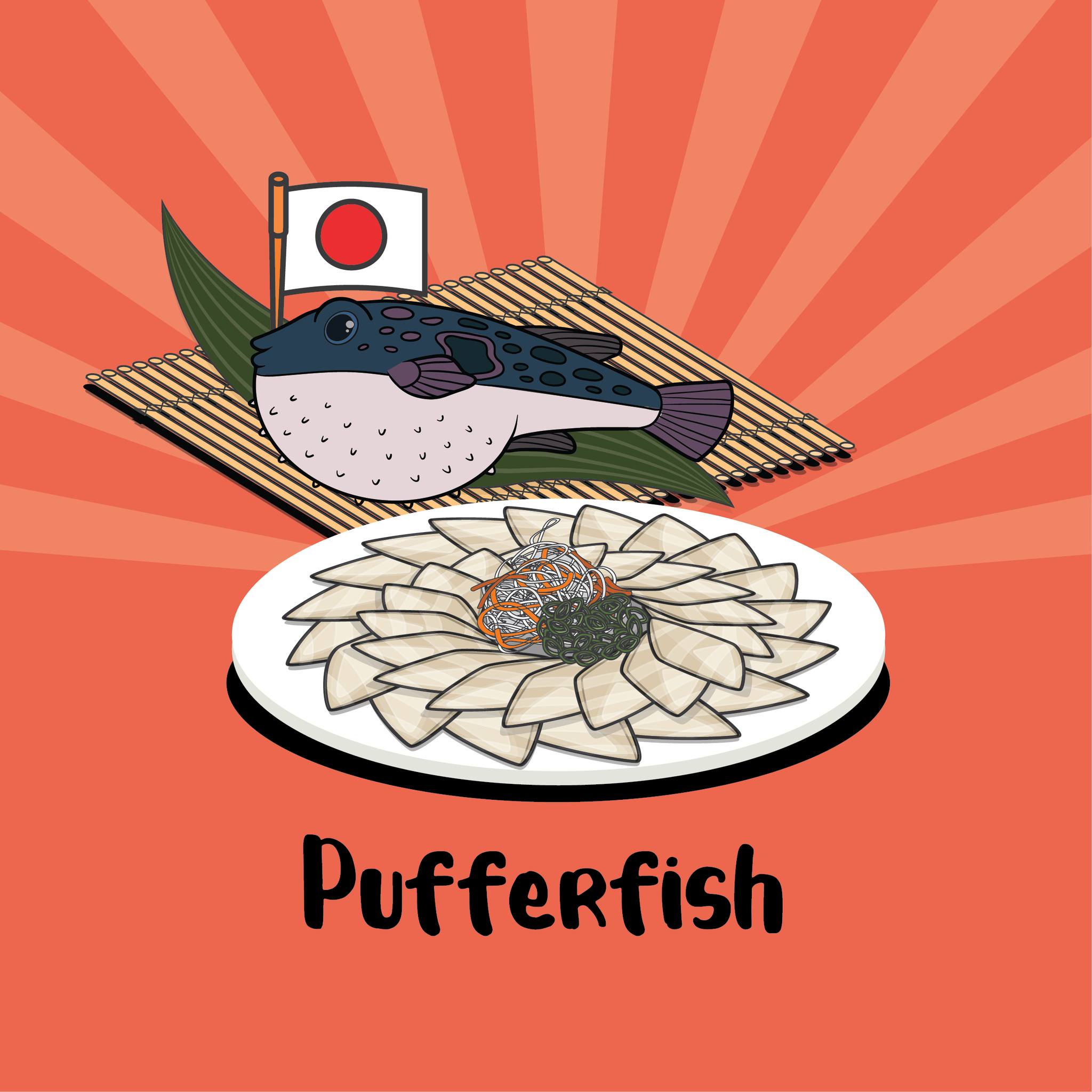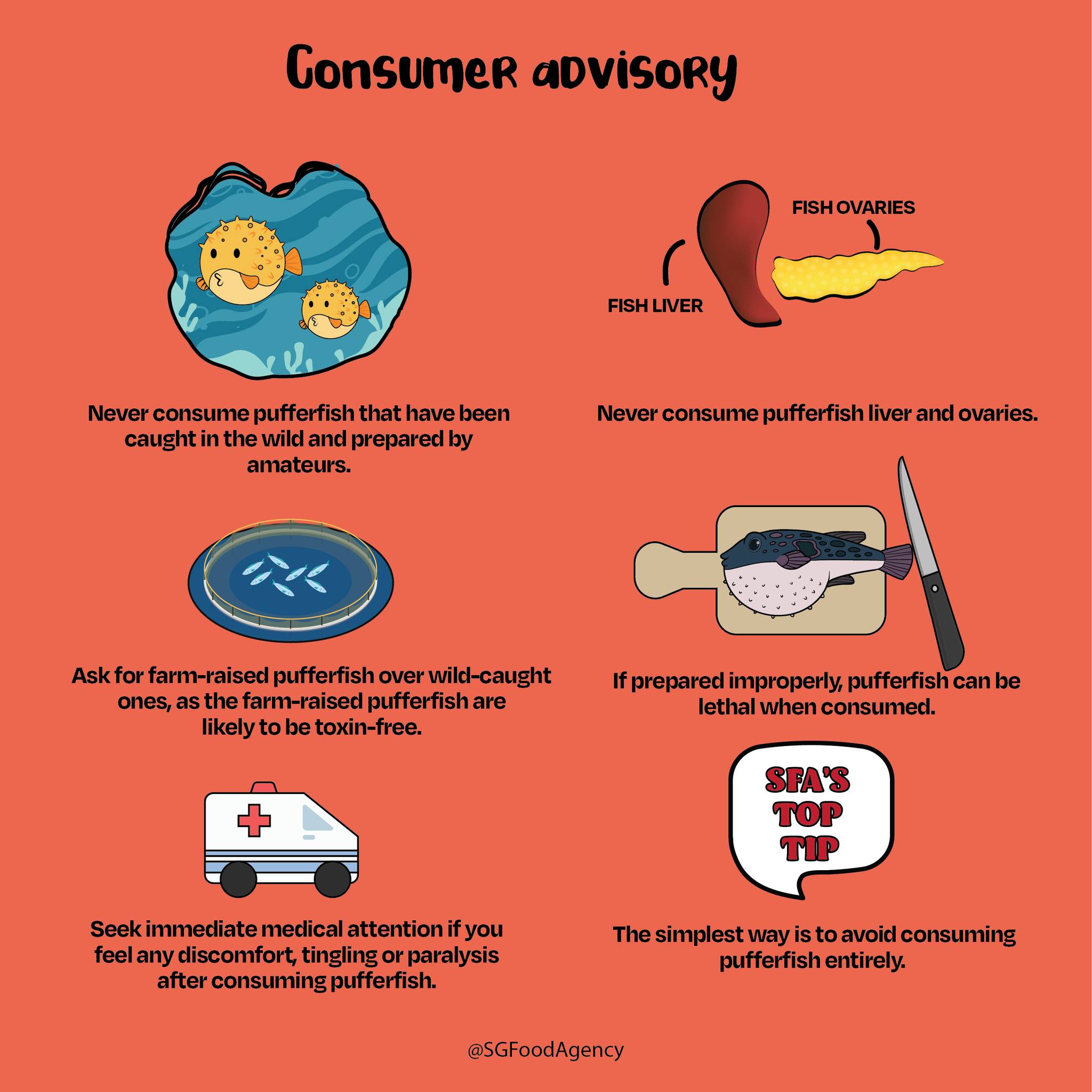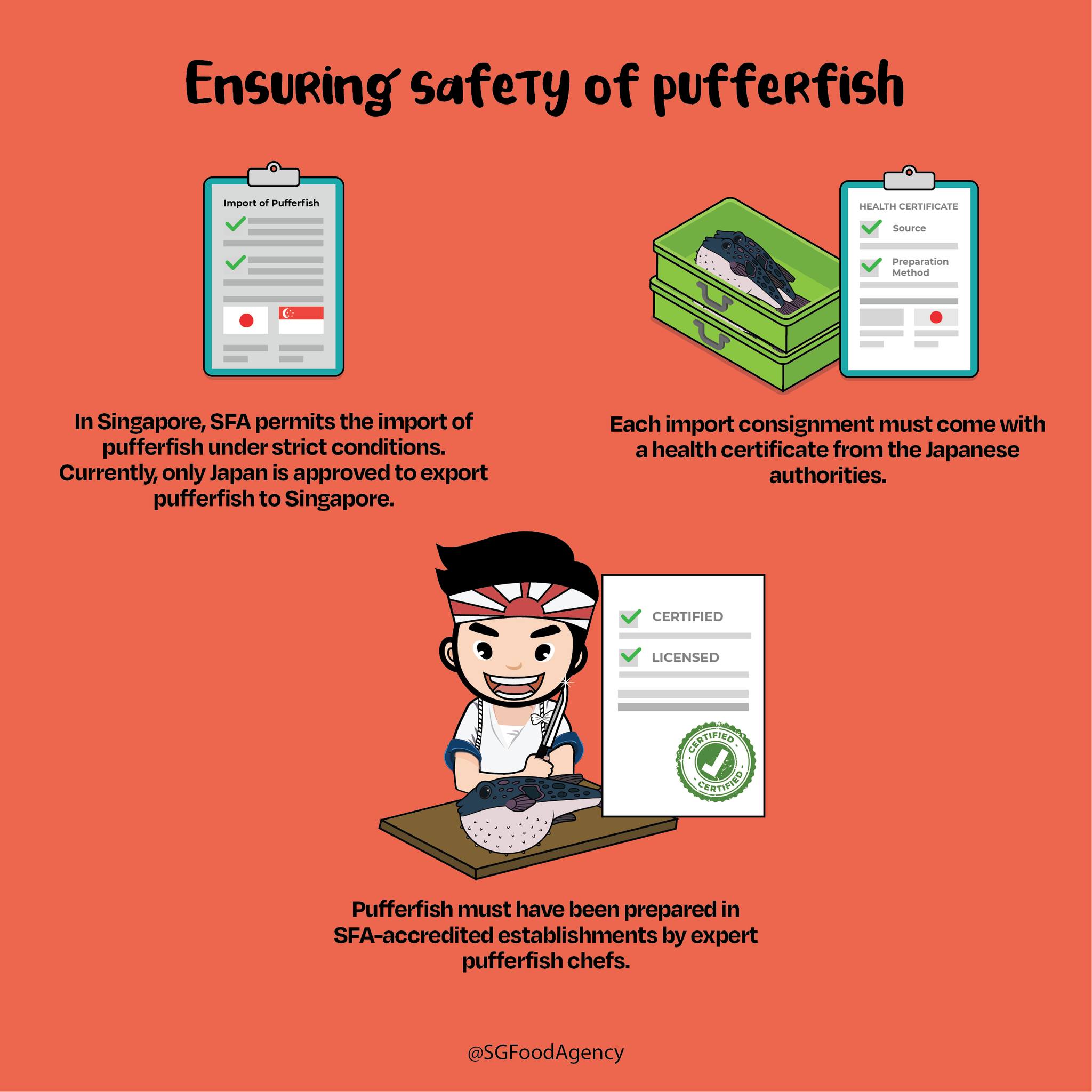Introduction
Pufferfish, also known as ‘fugu’, is a popular delicacy in Japan.
But did you know, pufferfish is an infamously poisonous fish that contains a lethal toxin known as tetrodotoxin (TTX), where as little as 0.002 g is enough to kill an adult human.
In Singapore, there are restaurants with pufferfish on the menu, though there are restrictions in place for food safety. In this article, we will learn more about pufferfish poisoning and how to protect ourselves from it.

What’s is TTX?
TTX is completely colourless and odourless. Cooking also does not destroy this dangerous toxin. When the toxin enters the body, it binds to the nerves, stopping them from working and the person become paralysed, unable to breathe and can suffocate to death. This can happen rapidly within 10 minutes to a few hours depending on the dosage. There is also no antidote.
Anyone who have consumed pufferfish and feel symptoms like tingling, numbness, and any form of paralysis, should seek medical attention immediately.
Why are Pufferfish Poisonous?
Pufferfish are not born poisonous. Pufferfish have evolved to accumulate TTX in their bodies, as a defence mechanism against getting eaten by bigger fish. The bacteria that produce the toxin are eaten by plankton, which are in turn eaten by snails and worms. Pufferfish then eat these snails and worms, gradually absorbing and accumulating the TTX in their bodies. Most of the toxin accumulates in the liver and ovaries, though this depends on the species of the pufferfish.
This means that farmed pufferfish which have never eaten any prey containing TTX are not poisonous. Therefore, the farming of pufferfish in enclosed areas and fed only TTX-free pellets, is becoming increasingly popular.
Ensuring safety of pufferfish in Singapore
In Singapore, SFA permits the import of pufferfish under strict conditions. Currently, only Japan is approved to export pufferfish to Singapore. The pufferfish must have been prepared in SFA-accredited establishments by expert pufferfish chefs which have been certified and licensed by the government of Japan. These chefs have undergone training and examinations to ensure they have the required skills and knowledge to prepare pufferfish safely.
As Singapore, unlike Japan, does not have a pufferfish preparation license system, SFA requires imported pufferfish to be pre-prepared by the licensed chefs. For wild pufferfish which are of a higher risk, only the prepared muscle fillet is allowed for import. For farmed pufferfish, which are TTX-free, the muscles, skin, fins and milt may be imported.
Each import consignment must come with a health certificate from the Japanese authorities, which has detailed information on where the fish were sourced from and prepared. SFA also tests these imported pufferfish for TTX as part of our food surveillance programme.
However, to ensure safety, both the food industry and consumers must play their part
-
NEVER consume any pufferfish or related fish, like porcupine fish, that have been caught in the wild and prepared by amateurs. Globally, this is the most common reason for TTX poisonings and deaths.
-
Never consume pufferfish liver and ovaries. These are the organs that accumulate the most TTX.
-
Ask for farm-raised pufferfish over wild-caught ones, as the farm-raised pufferfish are likely to be toxin-free.
-
If prepared improperly, pufferfish can be lethal when consumed.
-
Seek immediate medical attention if you feel any discomfort, tingling or paralysis after consuming pufferfish.
Top tip: The simplest way is to avoid consuming pufferfish entirely.


About the Author
Herman Teo is a Senior Scientist from the Risk Assessment and Communications Department of the National Centre for Food Science. With a Masters in Food Science and Human Nutrition from the National University of Singapore, his recent work includes the regulatory framework for insects for food and feed, and examining emerging food processing risks.